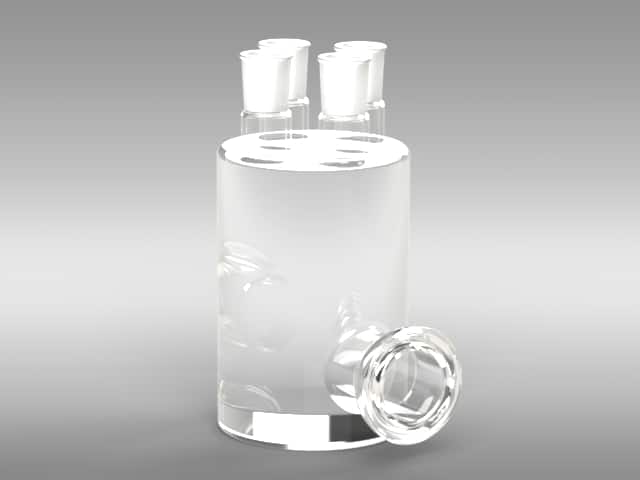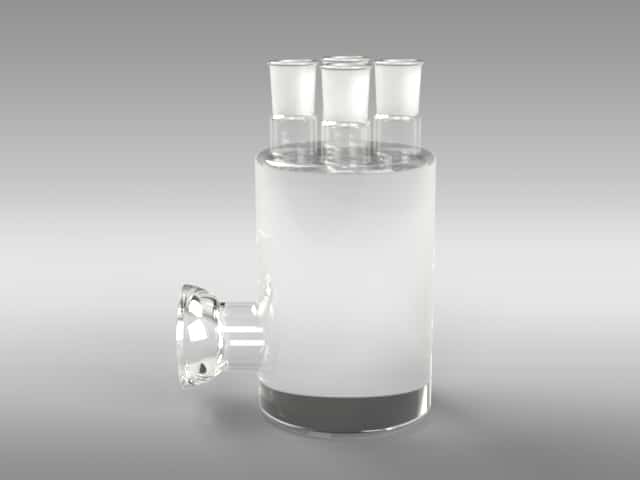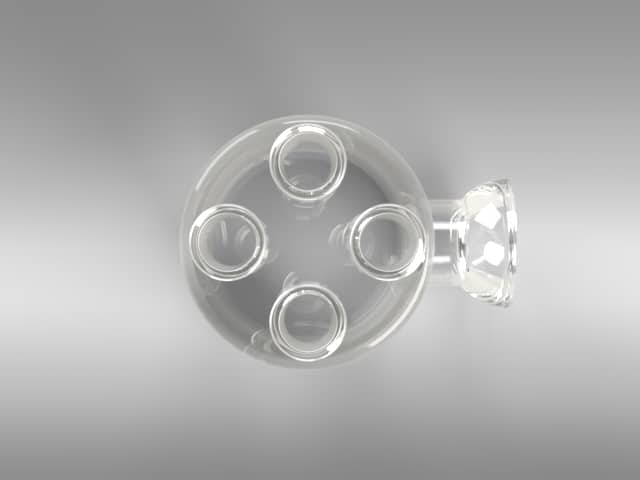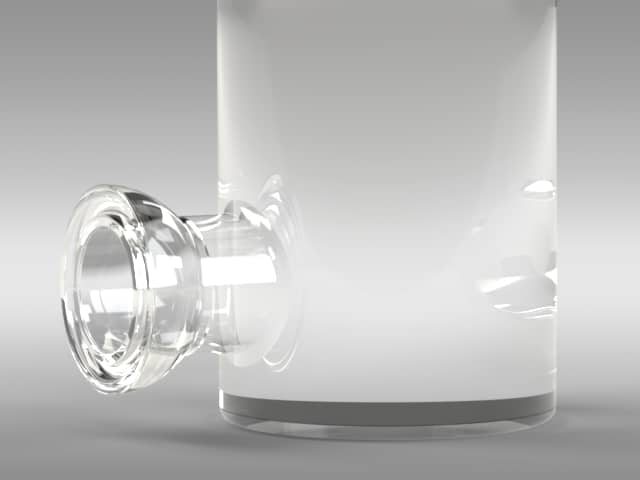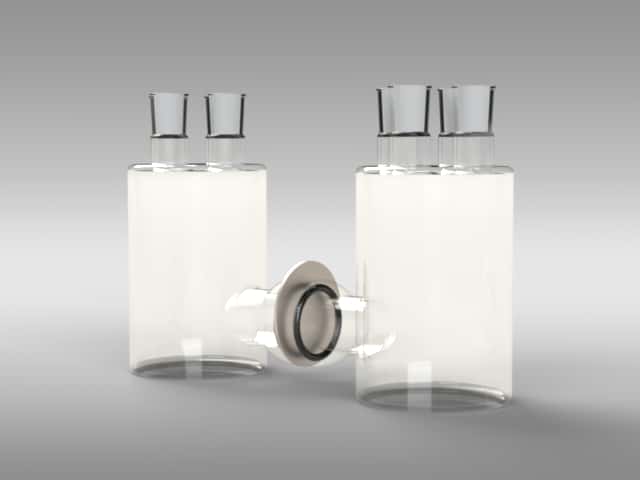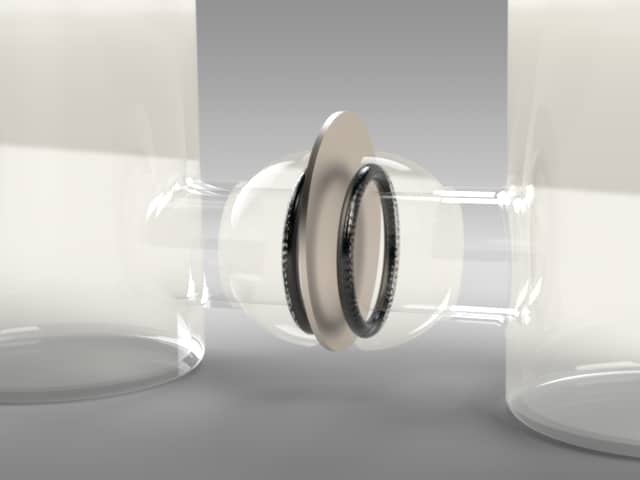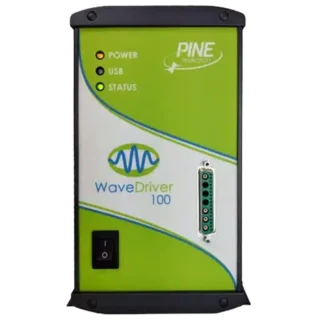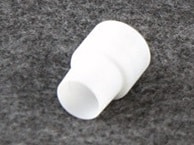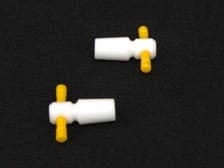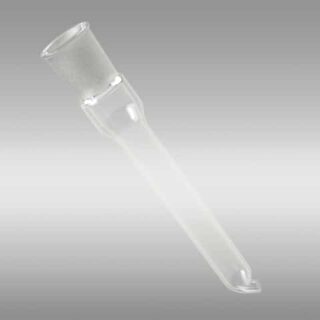Hydrogen permeation experiments often follow the ASTM G148 standard. This Devanathan-Stachurski cell from Pine Research is designed to meet the specifications in ASTM G148. Each borosilicate glass cell holds around 250 mL of electrolyte, has four 14/20 taper ports, and has a #25 spherical joint. A thin metal disk is sandwiched between the spherical joints of two cells, and sealed with O-rings on either side pressed together with a pinch clamp. Pine Research offers 1018 steel disks that are 2" (5.08 cm) OD, 0.056" (0.14 cm) thick; other materials may be available upon request.
The exposed surface area on either side of the disk is approximately 6.95 cm2. Per ASTM G148, the required electrolyte volume per cell should be > 20 mL/cm2, and the recommended ratio of metal disk radius to thickness should be 10:1 or greater. Therefore, using the standard 1018 steel disks manufactured by Pine Research with these cells, the ASTM G148 specifications can be satisfied. A minimum volume of 139 mL is required for a surface area of 6.95 cm2 (the cells each hold 250 mL), and the radius to thickness ratio (radius = 1.49 cm; thickness = 0.14 cm) is 10.5:1.
Operating a hydrogen permeation experiment requires two potentiostats. The typical experimental procedure requires a metal disk acting like the membrane in between the two Devanathan-Stachurski cells, and each half cell also contains a counter electrode and reference electrode (as well as optional Luggin tubes for each reference). Each potentiostat must be fully floating (that is, completely electrically isolated, especially with respect to Earth Ground), and both potentiostats' Working Drive and Working Sense leads are connected to the metal disk. Each instrument connects to its own counter and reference electrode. One potentiostat generates H2 gas at its counter electrode, which diffuses throughout the electrolyte and permeates through the metal disk. Any H2 that passes through the disk to the other half cell can be detected via oxidation on the opposing counter electrode.

